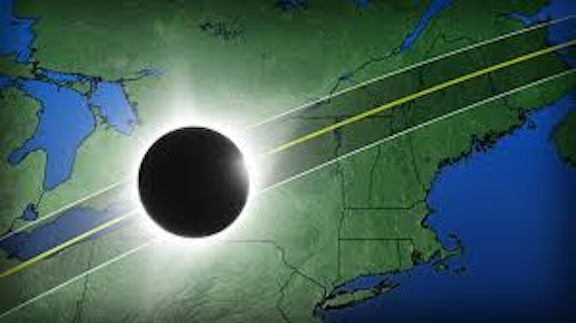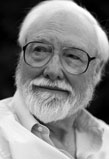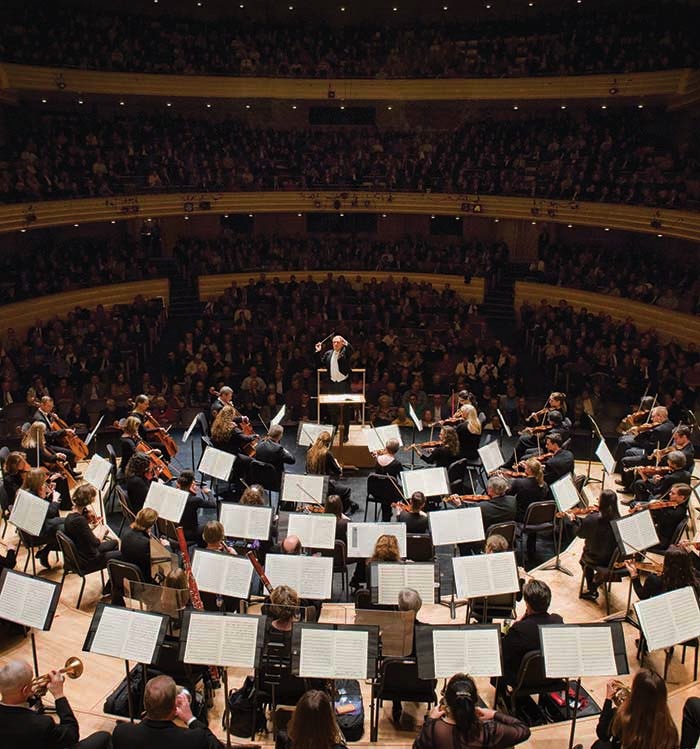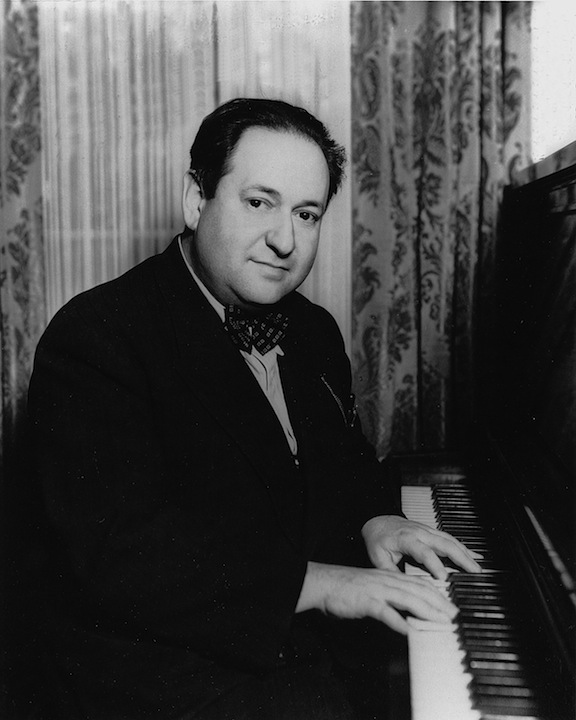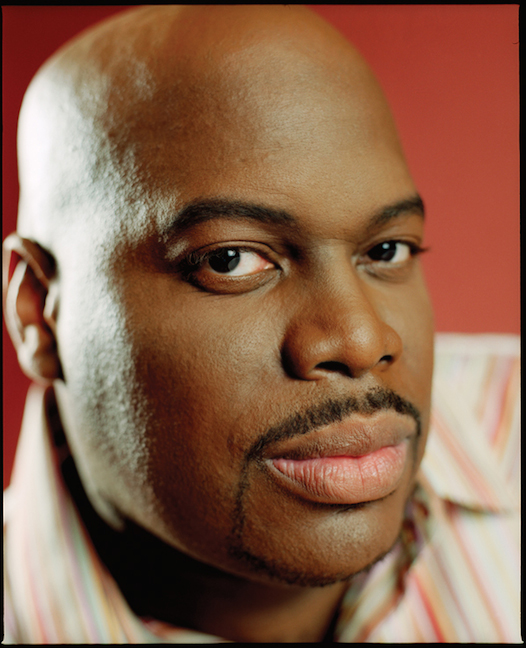The Well-Tempered Ear
Classical music: What has the UK’s Scotland contributed to classical music -– besides bagpipes? Plus, this afternoon is the last performance of the season-opening program by the Madison Symphony Orchestra.
3 Comments
ALERT: The final performance of the Madison Symphony Orchestra’s season-opening program of Richard Strauss “Also Sprach Zarathustra” (with the organ theme from “2001: A Space Odyssey”), Frank Martin’s Concerto for Seven Wind Instruments and Camille Saint-Saens (Symphony No. 3 “Organ”) will be given today at 2:30 p.m. in Overture Hall of the Overture Center. Here is a link to a previous post about the concert as well as links to several very positive reviews:
Here is a link to a review by John W. Barker (below) for Isthmus:
http://www.isthmus.com/daily/article.php?article=43634
Here is a link to the review by Gregg Hettmansberger (below) for Madison Magazine’s blog “Classically Speaking”:
http://www.madisonmagazine.com/Blogs/Classically-Speaking/September-2014/New-Season-New-Decades/
And here is a link to Lindsay Christians’ review for The Capital Times and 77 Square:
By Jacob Stockinger
All right, then.
The Big Vote is over.
By a wider-than-predicted margin of 55 to 45 percent, Scotland has chosen to remain a member of the United Kingdom.
The outcome surprised The Ear since so many of the arguments offered by Great Britain seemed similar to the ones that were probably made about why the United States should remain a colony of England.
But now the question is answered for at least another generation.
So, in the traditional of newsy arts coverage, the Deceptive Cadence blog of National Public Radio (NPR) asked: What has Scottish culture contributed to classical music?
You’d be surprised. I was.
One obvious, and, for many, noisily unpleasant, answer is the bagpipes. We’re not talking about Scotland-inspired music such as Felix Mendelssohn‘s justly famous “Hebrides” Overture (at bottom in a popular YouTube video featuring Claudio Abbado conducting the London Symphony Orchestra, though it sure does seem to capture the dark North Sea atmosphere of Scotland.)
But there are other answers too, and some of them may surprise you.
Be sure to listen to some of the sound samples provided on the NPR website posting. Here is a link:
Also be sure to check out the readers’ comments. They are a hoot, or whatever the equivalent saying is in Scotland.
And the reader comments contain one of the all-time best puns, based on The Rolling Stones song “Hey You, Get Off of My Cloud.” Of course, someone says it isn’t funny! Which makes it only funnier to The Ear.
Tags: 2001, 2001: A Space Odyssey, Arts, Camille Saint-Saëns, Capital Times, Classical music, concerto, Felix Mendelssohn, Frank Martin, Hebrides Overture, Jacob Stockinger, John DeMain, London Symphony Orchestra, Madison, Madison Symphony Orchestra, Mendelssohn, Music, National Public Radio, NPR, Orchestra, organ symphony, Overture, Overture Center, Richard Strauss, Rolling Stones, Scotland, United Kingdom, United States, wind instruments, YouTube
Classical music: The Madison Symphony Orchestra announces its new 2014-15 season. It includes programs from Bach to Hollywood exiles from Hitler and the Nazis, acclaimed soloists and ticket prices with only modest increases.
2 Comments
By Jacob Stockinger
The Madison Symphony Orchestra (below) has just announced its next season for 2014-15.
It strikes The Ear as both deeply interesting and tightly cohesive, a good blend of sure-fire hits and unknown or rarely heard repertoire. It also features some fine local talent and some unusual repertoire, though, unlike the past several seasons, no new or contemporary music is included. After all, this is a business with seats to fill, not some theoretical exercise in programming.
“You can’t have everything, especially when you are playing only eight concerts,” lamented MSO maestro John DeMain (below, in a photo by Prasad) when he discussed the new season with me.
But, DeMain added, the MSO is exploring doing another Chicago Symphony Orchestra “Beyond the Score” format concert — like this season’s presentation of Antonin Dvorak’s “New World” Symphony, which sold out — probably in January and probably with more than one performance, if they can find a sponsor to front the $50,000 cost. Then he will decide on what work out of more than 20 possibilities would be right.
Concerts take place in Overture Hall in the Overture Center on Friday nights at 7:30 p.m.; Saturday nights at 8 p.m.; and Sunday afternoons at 2:30 p.m.
The deadline for subscriptions renewals and keeping your current seat is May 8.
Here is the official press release that unveils the new season. The Ear also talked at length one-on-one with MSO music director and conductor John DeMain. Since the announcement is long enough for one post, DeMain’s insightful comments will appear a bit later in another post.
MADISON SYMPHONY ORCHESTRA ANNOUNCES 2014-15 SEASON
Maestro John DeMain and the Madison Symphony Orchestra (MSO) will deliver a diverse and exciting season of composers and guest artists for 2014-2015.
Beginning with a September program that focuses on the highly-talented musicians in the orchestra, DeMain will lead the audience through an exhilarating variety of themes and cultures throughout the season. Russia, Scandinavia, and Golden-Age Hollywood are just a few of the sound worlds the MSO will explore, while monumental works central to the orchestra, such as Beethoven’s Ninth Symphony, will anchor the year.
A world-class roster of guest artists has been invited to Madison for the season’s performances, including violinist Sarah Chang, pianist Olga Kern, violinist Daniel Hope, pianist Ingrid Fliter and University of Wisconsin-Madison School of Music pianist Christopher Taylor.
SEPTEMBER 19, 20 and 21, 2014
“Orchestral Splendor,” John DeMain, Conductor
RICHARD STRAUSS, “Also sprach Zarathustra”
FRANK MARTIN, Concerto for Seven Winds
CAMILLE SAINT-SAËNS, Symphony No. 3 (“Organ” Symphony)
German composer Richard Strauss’ Also sprach Zarathustra was once among his least performed works, but it is now firmly established as standard orchestral repertoire. The trumpet theme and thunderous timpani entrance (heard in Stanley Kubrick’s epic film “2001: A Space Odyssey”) are unmistakable.
Swiss composer Frank Martin’s Concerto for Seven Winds was written in 1949. It features seven solo instruments, exploring differences in sonority and expression. The virtuosic and conversational writing in these piece results in a playful, sportive character.
French composer Camille Saint-Saëns’ Symphony No. 3, known also as the “Organ” Symphony, draws on elements of both the conventional symphony and the tone poem. Formally unusual in its own time, yet popular from its conception, the work features virtuosic piano and organ passages and a masterful display of the vast colors possible in the symphony orchestra.
OCTOBER 17, 18 and 19, 2014
“The Russian Spirit” with John DeMain, conductor, and Olga Kern (below), piano
PETER ILYICH TCHAIKOVSKY, Suite from “Swan Lake”
SERGEI RACHMANINOFF, Concerto No. 1 for Piano
DMITRI SHOSTAKOVICH, Symphony No. 6
The Suite from “Swan Lake” tells the magical tale of a young prince enchanted by a swan maiden under the moonlight. Peter Tchaikovsky’s charming work utilizes haunting melodies, captivating waltzes, Russian and Hungarian folk themes, and a Spanish dance.
Sergei Rachmaninoff’s Concerto No. 1 for Piano displays a youthful freshness and an assertive, extroverted personality. Indeed, the composer began this work when he was 17! For audience members who delight in keyboard fireworks, this piece will thrill.
Symphony No. 6 by Dmitri Shostakovich, written as war clouds were gathering in Russia, was quite a contrast to Symphony No. 5. Lopsided movement lengths, a lack of obvious theme, and characters of anxiety and desolation reflect the intriguing political situation of the time, as well as Shostakovich’s own remarkably wide emotional compass.
NOVEMBER 7, 8 and 9, 2014
“Scandinavian Wonders” with John DeMain, conductor, and Sarah Chang (below), violin
EDVARD GRIEG, Lyric Suite
JEAN SIBELIUS, Concerto for Violin
CARL NIELSEN, Symphony No. 4 (“The Inextinguishable”)
Over the course of his long career, Edvard Grieg composed 66 Lyric pieces for piano, strongly rooted in the songs, dances, mythology, and spirit of Norway. He selected four of these fragrant and diverse miniatures for an orchestral suite, premiered in 1906.
“…For…10 years it was my dearest wish to become a great virtuoso.” wrote Finnish composer Jean Sibelius in his diary. Unfortunately the composer never reached great proficiency on the instrument, and his Concerto for Violin, awash in Nordic textures, expresses a melancholic farewell to that childhood dream.
As a philosophical guideline to his often raging Symphony No. 4, Danish composer Carl Nielsen said, “Music is life, and, like life, inextinguishable”. Four interlinked movements of frequently agitated energy lead to a climax of ultimate triumph and grand 19th century symphonic tradition.
DECEMBER 5, 6 and 7, 2014
A Madison Symphony Christmas
With John DeMain, conductor; Alyson Cambridge (below), soprano; Harold Meers, tenor; the Madison Symphony Chorus, Beverly Taylor, director; the Madison Youth Choirs, Michael Ross, artistic director; and the Mt. Zion Gospel Choir, Leotha Stanley, director.
John DeMain and the Madison Symphony don their Santa hats for this signature Christmas celebration. This concert is filled with traditions, from caroling in the lobby with the Madison Symphony Chorus to vocal performances by hundreds of members of Madison’s musical community. Christmas classics are interwoven with enchanting new holiday music. The culminating sing-along is Madison’s unofficial start of the holiday season!
FEBRUARY 13, 14 and 15, 2015
“Fliter Plays Chopin” with John DeMain, conductor, and Ingrid Fliter (below), piano
BENJAMIN BRITTEN, Variations on a Theme by Frank Bridge
FREDERIC CHOPIN, Concerto No. 2 for Piano
ROBERT SCHUMANN, Symphony No. 4
Frank Bridge, one of Benjamin Britten’s earliest composition teachers, was certainly responsible for the surpassing clarity, individuality, and discipline in Britten’s most cherished works. Britten’s “Variations” on Bridge’s theme range from passionate to playful, capturing the heartfelt musical admiration of a pupil for his teacher.
From the moment he arrived in Paris at age 21, Frederic Chopin drew the admiration of both the public and esteemed critics, alike. Concerto No. 2 was in fact his first concerto, displaying the composer’s prolific improvisatory and imaginative style.
In composing Symphony No. 4, Robert Schumann departed significantly from the standard Classical form he previously employed, connecting all four movements with recurring musical ideas–a novel proposition at the time.
MARCH 6, 7 and 8, 2015
“Composers in Exile: Creating the Hollywood Sound” with John DeMain, conductor, and Daniel Hope (below), violin
FRANZ WAXMAN, Sinfonietta for Strings and Timpani Ride of the Cossacks from “Taras Bulba”
MIKLÓS RÓZSA, Theme, Variations and Finale; Parade of the Charioteers from “Ben Hur”; Love Theme from “Ben Hur”; Love Theme from “Spellbound”
ERICH KORNGOLD, Concerto for Violin and the Suite from “Captain Blood”
This unique concert features the works of great classical composers before they fled Nazi persecution and also showcases their later brilliant contributions to Hollywood film scores.
Franz Waxman (below) is responsible for a long list of memorable Hollywood scores, including “The Bride of Frankenstein,” “Dr. Jekyll and Mr. Hyde” and “Rebecca.” His Sinfonietta, written for only strings and timpani, is comprised of three wildly different movements. Waxman also composed the soundtrack for the 1962 epic, “Taras Bulba.” “Ride of the Cossacks” is the exhilarating theme to which Taras and his army gallop to Dubno.
According to Miklos Rózsa (below), his “Theme” was conceived in the manner of a Hungarian folk song, then treated in variations of contrasting feeling, and summarized in a wild and swift finale. The 1934 work earned him his first international success. By the late 1940’s Rózsa was an Oscar-winning, film score composer, and joined the staff of Metro-Goldwyn-Meyer. His thrilling score for the 1959 film “Ben Hur” is one of his lasting achievements, earning him his third and final Oscar.
The Concerto for Violin, written by Erich Wolfgang Korngold (bel0w top) in 1945, perfectly blends the two musical lives of the composer, unapologetic in both its rigorous craftsmanship and its Hollywood charm. “Captain Blood” was a milestone for Korngold, as it was his first fully symphonic movie score. Produced in only three weeks, the music evidences his most professional and imaginative effort.
APRIL 10, 11 and 12, 2015
“Piano Genius” with John DeMain, conductor, and Christopher Taylor (below), piano
JOHANN SEBASTIAN BACH, Concerto No. 4 for Clavier
FRANZ LISZT, Concerto No. 1 for Piano
ANTON BRUCKNER, Symphony No. 7
Concerto No. 4 by Johann Sebastian Bach is part of a set of six concertos, dated to 1738. The piece was originally written for harpsichord and is ripe with movement and ornamentation. Bach’s concertos laid a crucial formal and harmonic groundwork for centuries of composition to follow.
Franz Liszt’s Concerto No. 1 for Piano is more than a century-long leap forward in time. Liszt’s Romantic genius is unabashedly on display, with thick orchestration, cadenzas that range from delicate to thundering, and lush harmonies.
Anton Bruckner was a country man, transplanted into bustling cosmopolitan Vienna, and he and his music were unlikely successes with audiences and critics. His music was said to “compel the element of the divine into our human world”.
MAY 8, 9 and 10, 2015
“Ode to Joy” with John DeMain, conductor; concertmaster Naha Greenholtz (below top), violin; Melody Moore, soprano; Gwendolyn Brown, contralto; Eric Barry, tenor; Morris Robinson (below bottom), bass; and the Madison Symphony Chorus, Beverly Taylor, director.
LEONARD BERNSTEIN, “Serenade” (after Plato’s “Symposium”)
LUDWIG VAN BEETHOVEN, Symphony No. 9 (“Choral”)
Leonard Bernstein’s “Serenade” for violin and orchestra, resulted from a rereading of Plato’s charming dialogue, “The Symposium.” The music dances through a series of inter-related “speakers” at a banquet (Phaedrus, Aristophanes, Erixymachus, Agathon, and Socrates), praising love.
Ludwig van Beethoven’s last and monumental Symphony No. 9 stands apart from his other symphonies by virtue of its humanistic message, enormous scale and organic unity of design. The mammoth fourth movement, operating like a symphony in miniature, is like nothing else in symphonic music. Four soloists, full chorus, the entire orchestra, and the famous “Ode to Joy” theme will conclude the Madison Symphony Orchestra’s season. (You can hear a populist flash mob version of the “Ode to Joy” at the bottom in a popular YouTube video that had almost 4-1/2 million hits.)
Single tickets for individual concerts have increased slightly and are $16 to $84 each, and go on sale Aug. 16. They are available at www.madisonsymphony.org/singletickets and through the Overture Center Box Office at 201 State Street or call the Box Office at (608) 258-4141.
New subscribers can receive savings up to 50%. For more information and to subscribe, visit www.madisonsymphony.org/newsub or call (608) 257-3734.
Groups of 15 or more can save 25% by calling the MSO office at (608) 257-3734. For more information visit, www.madisonsymphony.org/groups
Discounted seats are subject to availability, and discounts may not be combined.
You can also check out the official MSO website announcement of the new season by visiting:
http://www.madisonsymphony.org/14-15
The Madison Symphony Orchestra engages audiences of all ages and backgrounds in live classical music through a full season of concerts with established and emerging soloists of international renown, an organ series that includes free concerts, and widely respected education and community engagement programs. Find more information at www.madisonsymphony.org.
Tags: 2001: A Space Odyssey, Adolf Hitler, Also sprach Zarathustra, Alyson Cambridge, Anton Bruckner, Antonín Dvořák, Arts, Austria, Bach, Beethoven, Benjamin Britten, Bernstein, Beyond the Score, Camille Saint-Saëns, Carl Nielsen, Chicago Symphony Orchestra, Choir, Chopin, chorus, Christmas, Classical music, concerto, conductor, contralto, Denmark, dialogue, Dmitri Shostakovich, Dvorak, Edvard Grieg, Erich Wolfgang Korngold, exiles, Finland, Flash mob, France, Frank Bridge, Frank Martin, Franz Liszt, Franz Waxman, Frédéric Chopin, Germany, gospel, Grieg, Hitler, Ingrid Fliter, Jacob Stockinger, Jean Sibelius, Jew, Jewish, Johann Sebastian Bach, John DeMain, Leonard Bernstein, Liszt, Ludwig van Beethoven, Madison, Madison Symphony Orchestra, Mezzo-soprano, Miklos Rozsa, MSO, Music, New World Symphony, Nielsen, Ninth Symphony, Norway, Ode to Joy, Olga Kern, Orchestra, organ, organ symphony, Overture Center, Peter Tchaikovsky, Piano, Plato, populist, Rachmaninoff, Rachmaninov, Richard Strauss, Robert Schumann, Russia, Santa, Sarah Chang, Scandinavia, Schumann, Sergei Rachmaninoff, Sibelius, soprano, Stanley Kubrick, Switzerland, symphony, Tchaikovsky, tenor, The Inextinguishable, University of Wisconsin-Madison School of Music, University of Wisconsin–Madison, Violin, YouTube

